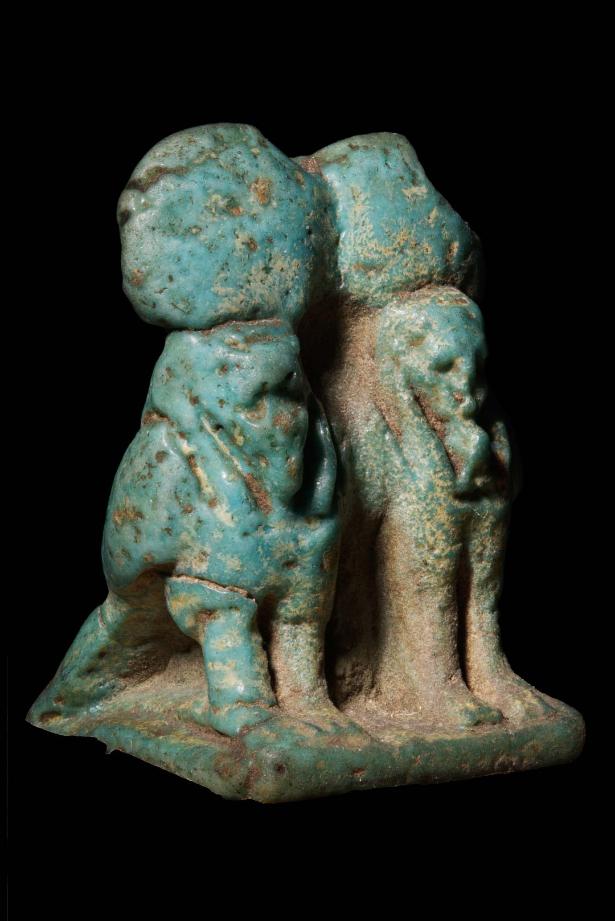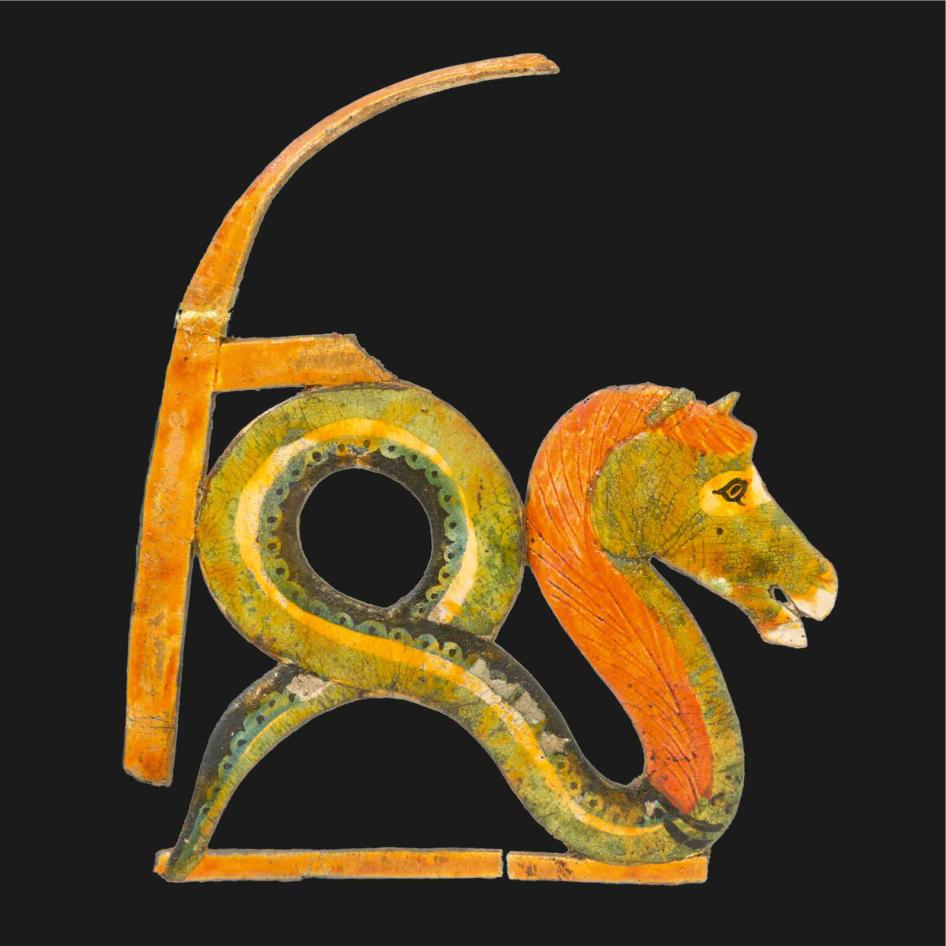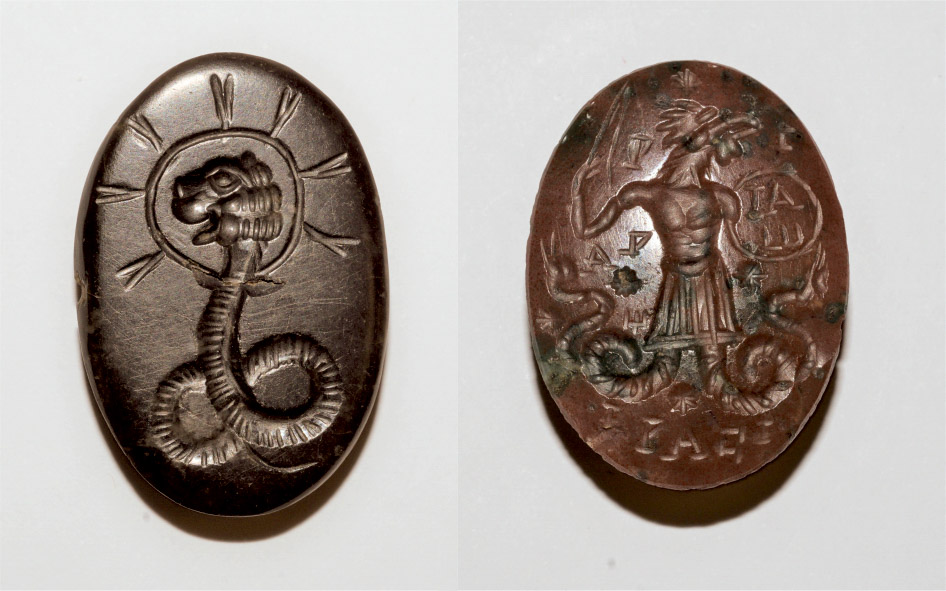Sacred Animals and Mythical Creatures
The Apis bull was a living bull, considered a god on earth. When the bull died, he was mummified and Apis was reborn as a new calf, in a continuous cycle. Other types of animal mummies served as offerings to the god they represented, rather than being sacred creatures in their own right.
Bronze statuette of the Apis bull, with incised winged-scarab decoration across its back. Saqqara, Egypt; Late Period-Ptolemaic Period (664-30bc). E.824
Limestone model of a shrew mouse, atop a hollow stone box likely designed as a coffin for a mummified shrew. Abydos, Egypt; Late Period (664-332bc). E.5285
Not all animals depicted in Egyptian and Sudanese art existed in real-life. After death, part of the soul was thought to become a ba, a human-headed bird. The sphinx is the most recognisable mythical beast, while creatures formed from snakes were often associated with protective powers.
Faience amulet in the form of two ba figures. Egypt; Late Period-Ptolemaic Period (664-30bc). E.9251

Image by Julia Thorne, Tetisheri
Fragment of magic wand decorated with images of protective demons. Abydos, Egypt; Middle Kingdom (2055-1650bc). E.7007
Cartonnage hippocampus – a horse-headed snake. Egypt; Late Period (664-332bc). E.2002

To learn more about hippocampi read our blog post by Egyptology students and Garstang Museum volunteers Louise O’Brien and Chang Lu.
Magic gems featuring (1) Chnoubis, shown as a lion-headed snake; and (2) Abraxas, shown as a man with the head of a cockerel and snakes in the place of legs. Egypt; Byzantine Period (390-641ad). E.9389, E.9396

Previous: Zoomorphism
Next: Using Animals